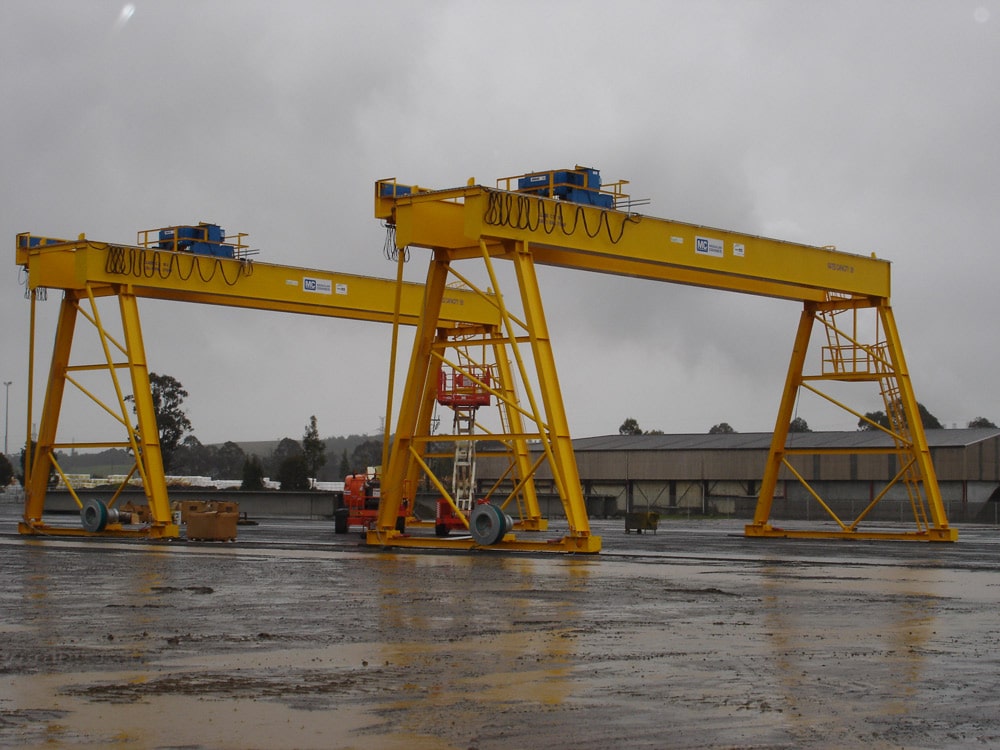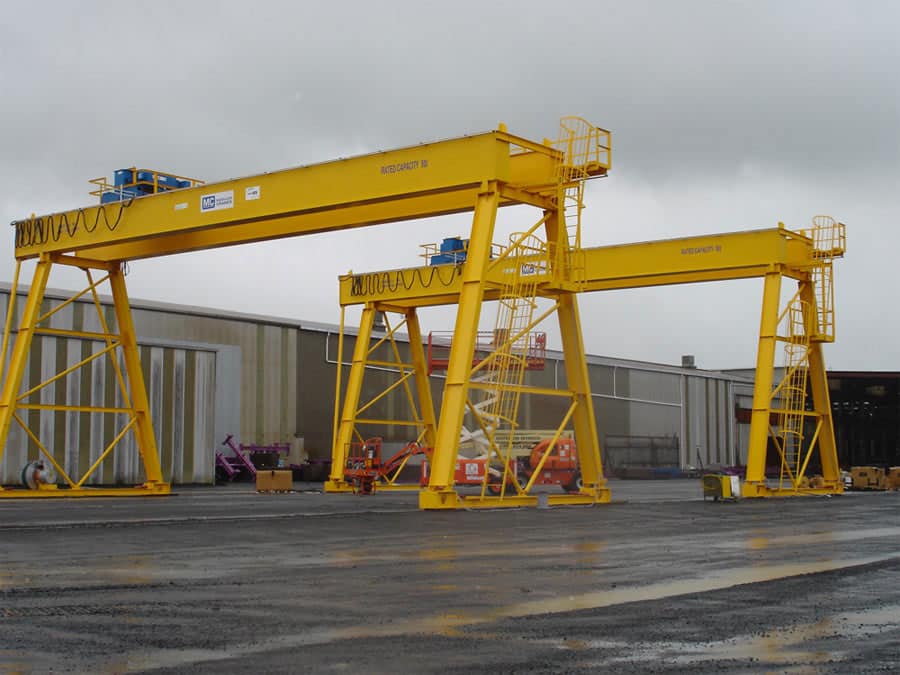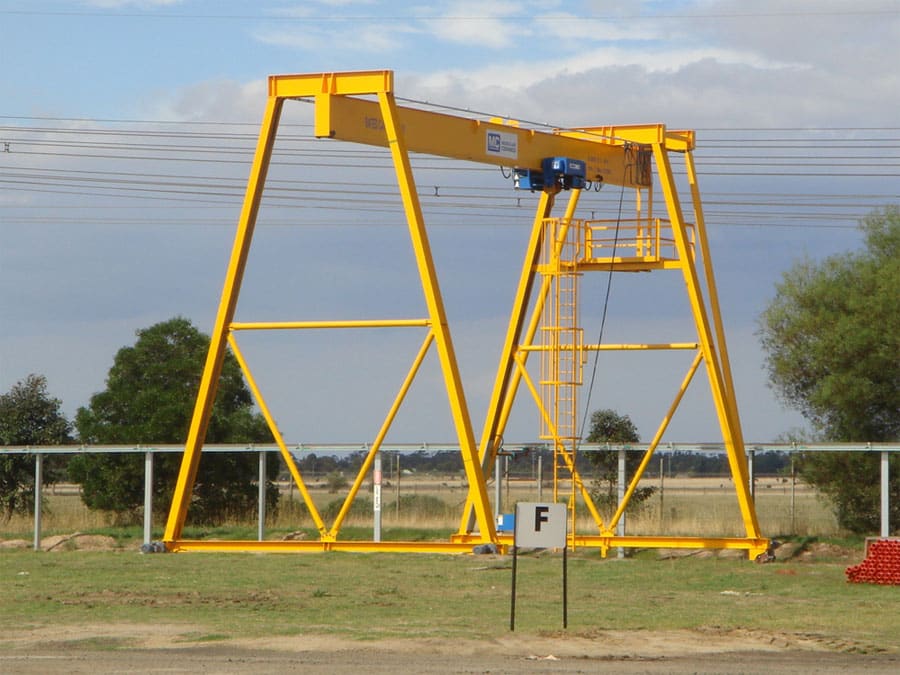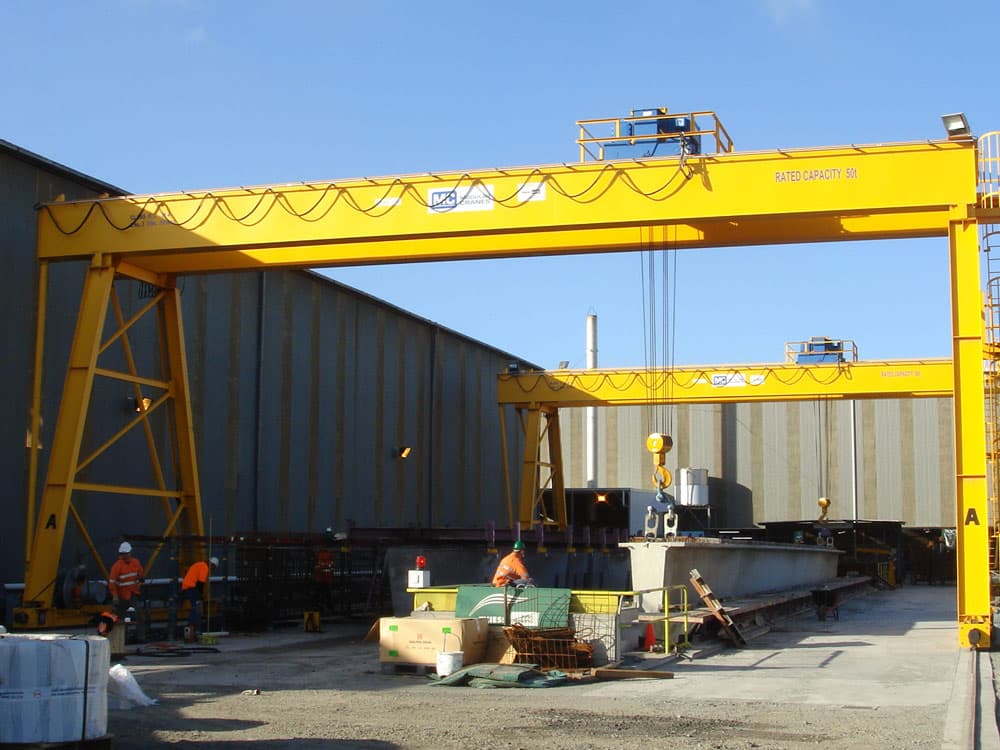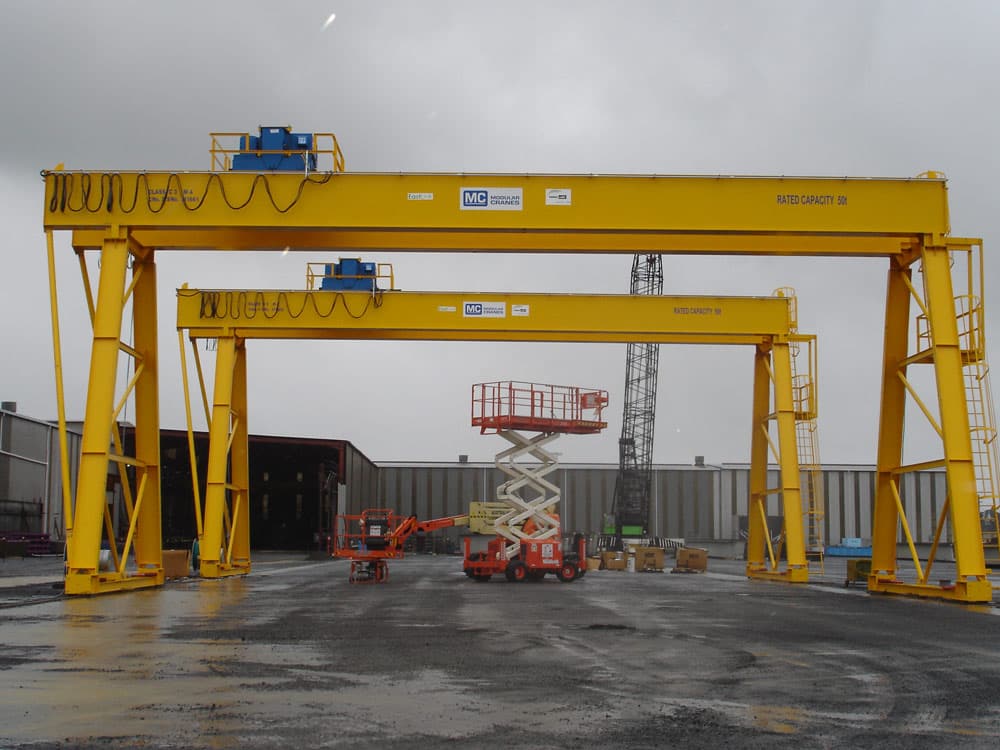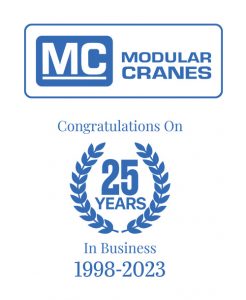Double Girder Gantry Crane
As one of Australia’s leading gantry crane suppliers and manufactures gantry cranes to suit all applications we have experience working across various sectors and industries, producing solutions for both indoor and outdoor applications.
Modular cranes gantry cranes are mostly used within the mining, general fabrication, precast concrete and ship building industries.
Gantry cranes are used where overhead runways are not practical or where an overhead crane is not strong enough. Generally gantry cranes are used for moving heavy loads outdoors.
Gantry Cranes are also known as Portal cranes or Goliath cranes and operate on floor mounted rails rather than a supporting gantry system as used by bridge cranes.
Often used in bulk cargo loading operations, gantry cranes are bridge cranes mounted on legs that run along a set of fixed rails or similar track or rails.
Semigantry crane is a gantry crane with one end of the bridge rigidly supported on one or more legs that run on a fixed rail or runway, the other end of the bridge being supported by a truck running on an elevated rail or runway.
Modular cranes have single girder solutions for Gantry Cranes from 10 T SWL up to 32T and double girder solutions up to 250T SWL. Get in touch with us if you are looking for Gantry Crane Melbourne.
Modular cranes overhead gantry cranes are built to the highest engineering standards using advanced technology and innovative design.
Standard Configuration:
Lifting Capacity: 10~200t
Span: 10m~35m
Lifting Height: Customized
Gantry cranes are used where overhead runways are not practical or where an overhead crane is not strong enough. Generally gantry cranes are used for moving heavy loads outdoors.
Advantages & Benefits of Gantry Cranes
- True vertical lift as standard
- Multiple combinations of drum length, gear ratio and rope reeve
- Capacities up to 250 tonne SWL
- Dual speed or variable frequency control with electrical braking
- All industrial duty classifications
- Standard and extra fast hoisting speed option
- Robust open-plan winch design
- Flexibility to allow process integration
- Failsafe hoist brake on the gearbox’s first reduction shaft
- Maximum reliability
What Type of Crane Do I Need?
Following considerations should be made when purchasing an overhead crane:
- Lifting capacity
- Lifting height
- Working environment (temperature)
- Working class (how many hours the crane will work in one working day)
- The Voltage, frequency
- Power supply requirement?
- Hoist model (wire rope hoist or chain hoist, if chain hoist, manual type or electric type,manual motorized trolley)
- Special functions requests? (Working area, intelligent functions etc.)


